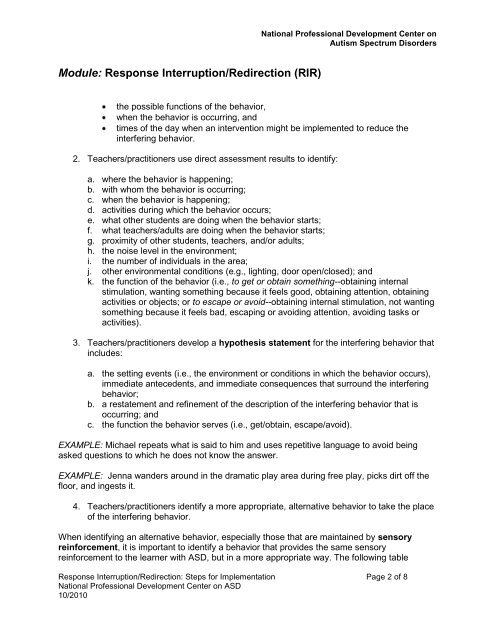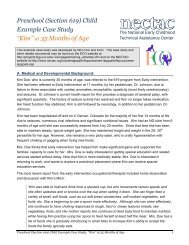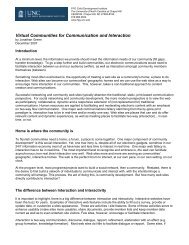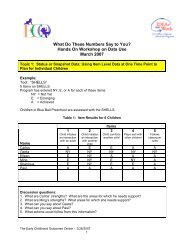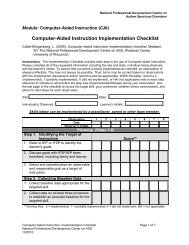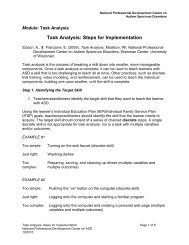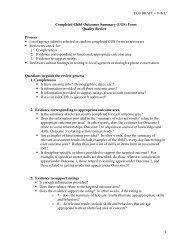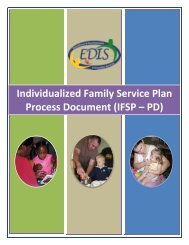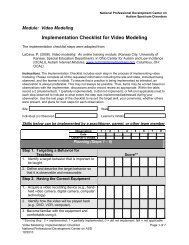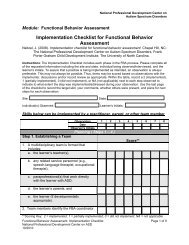Steps for Implementation: Response Interruption/Redirection
Steps for Implementation: Response Interruption/Redirection
Steps for Implementation: Response Interruption/Redirection
- No tags were found...
Create successful ePaper yourself
Turn your PDF publications into a flip-book with our unique Google optimized e-Paper software.
National Professional Development Center onAutism Spectrum DisordersModule: <strong>Response</strong> <strong>Interruption</strong>/<strong>Redirection</strong> (RIR)the possible functions of the behavior,when the behavior is occurring, andtimes of the day when an intervention might be implemented to reduce theinterfering behavior.2. Teachers/practitioners use direct assessment results to identify:a. where the behavior is happening;b. with whom the behavior is occurring;c. when the behavior is happening;d. activities during which the behavior occurs;e. what other students are doing when the behavior starts;f. what teachers/adults are doing when the behavior starts;g. proximity of other students, teachers, and/or adults;h. the noise level in the environment;i. the number of individuals in the area;j. other environmental conditions (e.g., lighting, door open/closed); andk. the function of the behavior (i.e., to get or obtain something--obtaining internalstimulation, wanting something because it feels good, obtaining attention, obtainingactivities or objects; or to escape or avoid--obtaining internal stimulation, not wantingsomething because it feels bad, escaping or avoiding attention, avoiding tasks oractivities).3. Teachers/practitioners develop a hypothesis statement <strong>for</strong> the interfering behavior thatincludes:a. the setting events (i.e., the environment or conditions in which the behavior occurs),immediate antecedents, and immediate consequences that surround the interferingbehavior;b. a restatement and refinement of the description of the interfering behavior that isoccurring; andc. the function the behavior serves (i.e., get/obtain, escape/avoid).EXAMPLE: Michael repeats what is said to him and uses repetitive language to avoid beingasked questions to which he does not know the answer.EXAMPLE: Jenna wanders around in the dramatic play area during free play, picks dirt off thefloor, and ingests it.4. Teachers/practitioners identify a more appropriate, alternative behavior to take the placeof the interfering behavior.When identifying an alternative behavior, especially those that are maintained by sensoryrein<strong>for</strong>cement, it is important to identify a behavior that provides the same sensoryrein<strong>for</strong>cement to the learner with ASD, but in a more appropriate way. The following table<strong>Response</strong> <strong>Interruption</strong>/<strong>Redirection</strong>: <strong>Steps</strong> <strong>for</strong> <strong>Implementation</strong> Page 2 of 8National Professional Development Center on ASD10/2010


